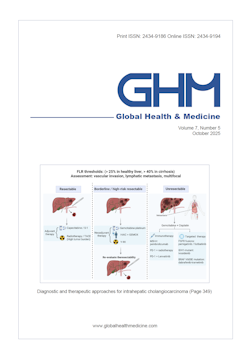Global Health & Medicine 2023;5(6):328-335.
How did COVID-19 impact development assistance for health? – The trend for country-specific disbursement between 2015 and 2020
Wakabayashi M, Hachiya M, Fujita N, Komada K, Obara H, Nozaki I, Okawa S, Saito E, Katsuma Y, Iso H
This study aimed to examine the changes that took place between 2015–2019 and 2020 and reveal how the COVID-19 pandemic affected financial contributions from donors. We used the Creditor Reporting System database of the Organization for Economic Cooperation and Development to investigate donor disbursement. Focusing on the Group of Seven (G7) countries and the Bill and Melinda Gates Foundation (BMGF), we analyzed their development assistance for health (DAH) in 2020 and the change in their disbursement between 2015 and 2020. As a result, total disbursements for all sectors increased by 14% for the G7 and the BMGF. In 2020, there was an increase in DAH for the BMGF and the G7 except for the United States. The total disbursement amount for the "COVID-19" category by G7 countries and the BMGF was approximately USD 3 billion in 2020, which was 3 times larger than for Malaria, 8.5 times larger for Tuberculosis, and 60% smaller for STDs including HIV/AIDS for the same year. In 2020 as well, the United States, the United Kingdom, Japan, Italy, and Canada saw their disbursements decline for more than half of 26 sectors. In conclusion, the impact of COVID-19 was observed in the changes in DAH disbursement for three major infectious diseases and other sectors. To consistently address the health needs of low- and middle-income countries, it is important to perform a follow-up analysis of their COVID-19 disbursements and the influence of other DAH areas.
DOI: 10.35772/ghm.2023.01049







